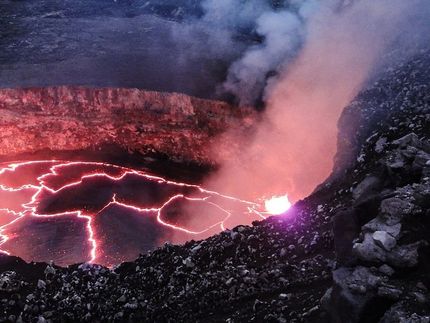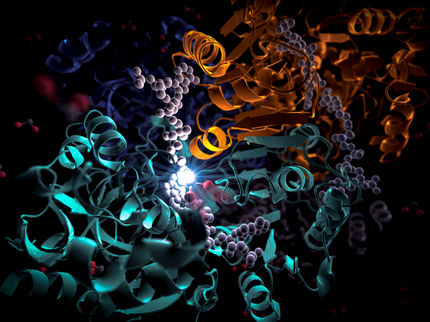Inner workings of photosynthesis revealed by powerful new laser technique
Instant pictures showing how the sun's energy moves inside plants have been taken for the first time, according to research in Physical Review Letters. The images unravel some of the inner workings of the most efficient solar energy process on earth - photosynthesis. Inside a photosynthetic protein, the sun's energy is efficiently guided across the molecule to drive a chemical reaction that stores energy as food and takes in carbon dioxide. Scientists would very much like to harness this process as they search for new energy solutions to replace fossil fuels. To do this, they need to understand this energy transport process in more detail.
Analysing energy transport is an important way of understanding the inner workings of a wide range of systems, from biological processes to car engines. However, in very small-scale systems such as photosynthetic molecules, quantum effects come into play making it difficult for scientists to explain how photosynthetic molecules are able to transport energy with remarkably high efficiency. Until now, one of the major obstacles has been the lack of a direct way of probing some of the fundamental mechanisms involved in the flow of energy between electrons in molecules.
"These new pictures are instantaneous snap-shots of energy being transported between electrons across a protein. Remarkably, the pictures go further in unravelling the complex way the electrons interact. This gives us something akin to a fingerprint for electronic couplings," says Dr Ian Mercer from the School of Physics at University College Dublin, the lead author of the new study, who is a visiting researcher at Imperial College London.
The researchers probed a sample of a protein found in bacteria, called LH2, which was provided by the University of Glasgow. This bacterial protein was used because it harvests light in the same way as photosynthetic plant proteins. By illuminating the sample with a combination of high power laser pulses all derived from the same laser, the researchers obtained a map of bright spots on a camera in a tiny fraction of a second. The position of each spot corresponds to a unique angle of light emitted from the sample and this directly relates to how electrons in the protein respond to the laser light and to each other.
Alternative laser-based techniques for gathering such information do already exist, but require the sample to be exposed to the laser light for a long period, which may lead to sample degradation. They also require much more intensive computer processing.
The researchers needed a very powerful and stable laser in order to get the new approach to work efficiently and accurately. They used the Astra laser at the Science and Technology Facilities Council's Rutherford Appleton Laboratory (RAL). It incorporates state-of-the-art technology developed in the Physics Department at Imperial College London to produce pulses of light with the right properties for this experiment.
"The laser produces a very broad range of colours, which allowed us to map a broad range of energy levels in the protein. The availability of this laser source at RAL, which is accessible to a broad range of scientists, opens up a lot of new and exciting science - like this work", explains co-author of the study, Dr John Tisch from Imperial College London's Department of Physics.
With this laser, a map can be captured with a single pulse of laser light meaning that full information can be gathered prior to, or during, a chemical reaction. The technique can also be used to characterise high-value, delicate samples because only a small quantity of sample is required. And with one thousand laser pulses available per second from the laser, there is potential for rapid automated sample characterisation.
"More demonstrations are around the corner. Hopefully one day we will be able to harness the exquisite mechanisms that we learn about from molecules, whose function has been honed by evolution over hundreds of millions of years", says Dr Mercer. The researchers are currently applying this approach across the molecular biosciences and with electronic devices.
Other news from the department science
Most read news
More news from our other portals
See the theme worlds for related content
Topic world Synthesis
Chemical synthesis is at the heart of modern chemistry and enables the targeted production of molecules with specific properties. By combining starting materials in defined reaction conditions, chemists can create a wide range of compounds, from simple molecules to complex active ingredients.

Topic world Synthesis
Chemical synthesis is at the heart of modern chemistry and enables the targeted production of molecules with specific properties. By combining starting materials in defined reaction conditions, chemists can create a wide range of compounds, from simple molecules to complex active ingredients.





























































